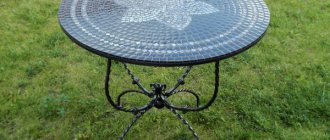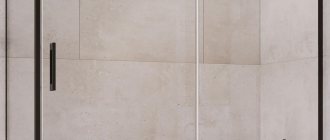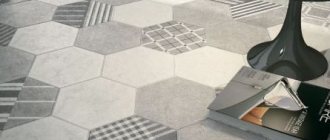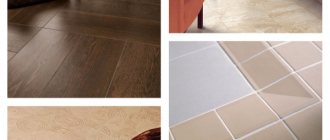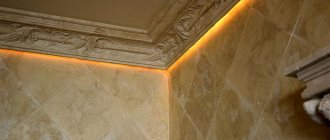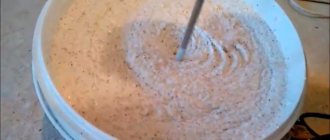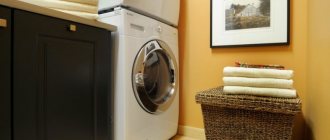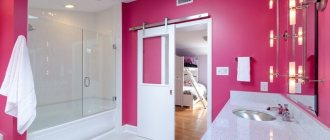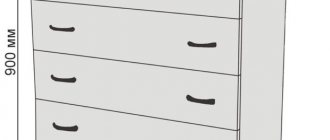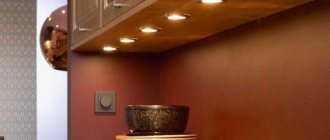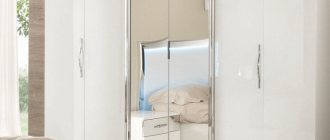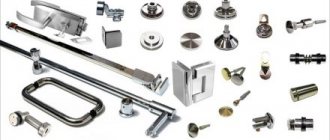When you plan to lay tiles yourself, a certain number of bags of adhesive mixture are purchased before work. The formula for calculating the required amount of material is simple: the consumption of tile adhesive per 1 m2 of tile is multiplied by the area of the surface to be covered.
It is necessary to be able to make such calculations when a construction team is engaged in laying. The formula easily verifies the correctness of the estimate and plans the budget for repair work in advance. Independent calculations can be replaced with an online consumption calculator.
What affects consumption?
The surface area on which the tiles are laid is considered an easy mathematical formula from elementary school. But the rate of glue consumption can depend on several factors simultaneously.
Type of glue
There are three types of tile adhesive:
- cement-based;
- dispersion compositions;
- based on epoxy resin.
The most economical cement composition. To prepare it, you buy cement with additives, which is diluted in water or latex liquid. Cement glue needs 1-1.9 kg per square meter of surface.
Dispersion mixtures are not further diluted, but are immediately ready for use.
Epoxy-based adhesives have a liquid consistency and are mixed with a catalyst before installation. The added component provokes the development of a chemical reaction, due to which ready-made tile adhesive is formed from the epoxy resin. Such a mixture requires effort and time, but the created adhesive joint will be water- and frost-resistant, does not shrink, adheres well to the base, and does not crack. Due to the presence of several components in the composition, it is incorrect to compare the average consumption of epoxy with cement mortar.
Tile size
- For small tiles measuring 100x100 mm, cement mixtures are used, the thickness of which will be slightly less than 0.2 cm.
- If the tile size is 200x300 mm, the layer thickness should be in the range of 0.2-0.35 cm.
- With dimensions of 300x300-500x500 mm, the layer of the adhesive mixture is 0.35-0.45 cm.
- When the size of the tile side exceeds 600 mm, apply the composition in a layer of 0.4-0.5 cm to the base and to the tile. The layer on the back side should not exceed 0.1 cm.
Tile type
Materials absorb adhesive composition differently.
The consumption of adhesive under tiles for porous substrates is greater, for glazed industrial tiles less mixture is used, and porcelain tiles practically do not absorb the solution.
When purchasing a mixture, read the instructions; manufacturers indicate on the packaging the material with which they can be used. There are compositions for a specific surface or universal means that connect any materials.
It is when calculating the amount of universal glue that the degree of absorption is taken into account. When laying the stone, an additional solution is applied to its back side.
When calculating consumption, the evenness of the surface is taken into account. Handmade tiles or clinker often have defects on the back side. An additional layer of glue is applied to such areas, which increases the actual consumption.
Consumption per 1 m2 increases if tiles of different thicknesses are laid on the same surface. Leveling occurs by increasing the thickness of the layer.
Tile laying technology
- Thin layer laying. A minimal layer of substance is applied, intended only for adhesion of the finishing material to the base. Its thickness will not exceed 0.5 cm. The technique is used when work is carried out on an almost flat base with height differences of no more than 0.3 cm.
- Thick layer installation. Justified when working on complex and uneven surfaces. The method applies mixtures that not only glue materials, but also additionally level surfaces. Differences of up to 30 mm in height are smoothed out. With a layer thickness of 3 cm, the amount of tile adhesive for laying 1 m2 of tiles increases significantly. This method is used to lay homemade tiles and clinker with a highly profiled back side. If you save the composition, after gluing the surface will be uneven, and the finishing material itself will quickly peel off due to voids in the adhesive seam.
The smoother the surface of the base and the finishing material itself, the lower the consumption rate.
Main surface
When the substrate is highly porous, it will absorb more cement tile adhesive than the same area of concrete floor. In the first case, the consumption of the product per m2 will be significantly higher.
Experts recommend that when calculating adhesive for exterior work and for gluing slabs on walls, take into account that the composition is applied not only to the base, but also to the underside of the tile.
This is necessary for better adhesion of surfaces and elimination of voids under the tiles. The factor is taken into account when gluing tongue-and-groove slabs. The quality of gluing increases, but the consumption of the adhesive mixture also increases.
Brand and composition of tile adhesive
Depending on the brand of glue, components are added to the composition, the ratio of which changes the density of the glue.
The dry composition may include the element:
- increasing adhesive properties;
- increasing elasticity;
- changing the coupling speed;
- preventing slipping, etc.
Depending on the ratio of the components, from two bags of bulk substance of the same mass after preparation, a different volume of finished glue is obtained.
For example, 1000 g of Unis Granite will be used for 1 m2 of tile, and 1350 g of the Litokol K80 mixture will be used for the same area and layer thickness.
Temperature
Any finishing work with tiles is carried out at t=+5…+40 °C. The ideal temperature is 18-24 °C.
The higher the ambient temperature, the faster the liquid evaporates from the adhesive solution. At low temperatures it is difficult to accurately calculate the flow rate. In the cold, the glue quickly deteriorates.
If the tiles are laid outdoors, the work is carried out in calm weather. Strong gusts of wind accelerate the evaporation of moisture, which increases consumption.
Working technique and qualifications of the stacker
Tilt of the spatula at different angles changes the thickness of the layer applied. The higher the degree, the greater the consumption.
When a beginner lays tiles, he uses more mixture than an experienced tiler. The reason is experience, violation of technology or waste of some material. Beginners are advised to buy extra glue so that the installation process does not stop in the middle.
Type of spatula
- The highest value is for a spatula with square teeth.
- In second place is the U-shaped tool.
- The V-shaped spatula uses a minimal amount of mixture.
The size of the teeth is also taken into account. On the packaging of tiles, the manufacturer often indicates this parameter, and not the thickness of the layer.
For example, tiles measuring 300x300 mm are laid with a spatula 8, for tiles 50x50 cm you need a spatula 12.
The composition is applied with the smooth side of the spatula, and then combed with a jagged edge. The higher the teeth, the thicker the layer remains.
The instructions for the product indicate the consumption depending on the spatula, provided that the applied mixture is “combed” at an angle of 90°. The height of the adhesive layer will be different if the angle changes and floor tiles are placed on top, which presses the seam.
The thickness of the seam when applied with a spatula will be 1/3-1/2 the size of its teeth. Due to the different application angle and adhesive composition, the same number of square meters of tiles can contain different amounts of mixture.
Consumption rates
Ceresit
| Name | Max. tile side length, cm | Comb teeth size, mm | Consumption, kg per sq. m |
| Ceresit CM 9 (for ceramic tiles) | 10 | 4 | 2 |
| 15 | 6 | 2,7 | |
| 20 | 8 | 3,2 | |
| 30 | 10 | 4,2 | |
| Ceresit CM 11 Plus (for tiles and porcelain stoneware) | 5 | 3 | 1,7 |
| 10 | 4 | 2 | |
| 15 | 6 | 2,7 | |
| 25 | 8 | 3,6 | |
| 30 | 10 | 4,2 | |
| Ceresit CM 12 (for porcelain stoneware and large tiles) | 30 | 10 | 4,2 |
| 60 | 12 | 6 | |
| Ceresit CM 14 Extra | 15 | 6 | 2,7 |
| 25 | 8 | 3,6 | |
| 30 | 10 | 4,2 | |
| 45 | 12 | 6 | |
| Ceresit CM 16 (elastic) | 10 | 4 | 2 |
| 15 | 6 | 2,7 | |
| 25 | 8 | 3,6 | |
| 30 | 10 | 4,2 | |
| Ceresit CM 17 (super elastic) | 10 | 4 | 1,5 |
| 15 | 6 | 2,1 | |
| 25 | 8 | 2,7 | |
| 30 | 10 | 3,2 | |
| 40 | 12 | 4,1 | |
| Ceresit CM 115 (marble and mosaic) | 10 | 4 | 2,5 |
| 15 | 6 | 3,4 | |
| 25 | 8 | 3,9 | |
| 30 | 10 | 4,4 | |
| Ceresit CM 117 (elastic adhesive for facade tiles, stone and porcelain tiles) | 10 | 4 | 1,8 |
| 15 | 6 | 2,5 | |
| 25 | 8 | 3,2 | |
| 30 | 10 | 3,6 | |
| 40 | 12 | 4,7 |
When using the elasticizer Ceresit SS 83, it is diluted with water 2 to 1 and used to mix the mixture.
Eunice
Eunice tile adhesive selection table
| Name | How much tile adhesive is needed per 1m2 when using a 6*6 mm comb | Recommended layer thickness, mm |
| Eunice Plus | 3,5 | 3-15 |
| Unis 2000 | ||
| UNIS XXI | ||
| Unis HiTech | ||
| Eunice Granite | 3-10 | |
| Eunice Belfix | ||
| Unis Fix | 3,5-5 | 3-15 |
| Eunice Pool | 3,1 | 3-6 |
Hercules
| Name | Average consumption at a layer thickness of 1 mm, kg/sq. m | Max. layer thickness, mm |
| Universal GM-35 | 1,53 | 20 |
| Superpolymer GM-45 | 1,53 | |
| For porcelain tiles GM-55 | 1,53 | 20 |
| Elastic GM-195 | 1,43 | |
| For heated floors GM-125 | 1,49 | |
| Heat resistant GM-215 | 1,81 | 20 |
| Strong GM-115 | 1,53 | 20 |
| For mosaic GM-165 | 1,33 | |
| Aqua-stop GM-145 | 1,49 | |
| Basic GM-25 | 1,53 | 10 |
Vetonit
Vetonit glue selection table
| Name | Average consumption at a layer thickness of 1 mm, kg/sq. m | Max. layer thickness, mm |
| Optima | 1,29 | 10 |
| Easy fix | 1,29 | 15 |
| Granite fix | 1,29 | 15 |
| Profi plus | 1,35 | 15 |
| Ultra fix | 1,29 | 15 |
| Ultra fix winter | *3-3,5 | 15 |
| Marble | 1,29 | 15 |
| Absolute | *3-3,5 | 30 |
| weber.vetonit RF | *3-3,5 | 15 |
| weber.vetonit RFF | *3-3,5 | 15 |
*Consumption is indicated in kg/sq.m. m when working with a spatula with teeth 6*6 mm.
Kreps
| Name | Glue consumption, kg/m2 | Approximate cladding area using 25 kg packaging, m2 |
| Plus | 2-4 | 8 |
| Aqua | ||
| Base | ||
| Standard | ||
| Super | ||
| Kreps Prostokley | ||
| Reinforced | 2-3 | |
| Express | ||
| White Reinforced |
Plitonite
| Name | Length of the longest side of the tile, mm | Height of comb teeth, mm | Dry mixture consumption, kg/m2 | Area of laid tiles using 15 kg of glue, m2 |
| Plitonite A | < 108 | 4 | 1,8 | 14 |
| 109-200 | 6 | 2,7 | 9 | |
| 201-250 | 8 | 3,6 | 7 | |
| 251-300 | 10 | 4,5 | 6 | |
| Plitonite B | < 108 | 4 | 1,7 | 15 |
| 109-200 | 6 | 2,6 | 10 | |
| 201-250 | 8 | 3,4 | 7 | |
| 251-300 | 10 | 4,3 | 6 | |
| > 301 | 12 | 5,1 | 5 | |
| Plitonite B profi | < 108 | 4 | 1,7 | 15 |
| 109-200 | 6 | 2,6 | 10 | |
| 201-250 | 8 | 3,4 | 7 | |
| 251-300 | 10 | 4,3 | 6 | |
| > 301 | 12 | 5,1 | 5 | |
| Plitonite C light | 51-108 | 4 | 1 | 15 |
| 109-200 | 6 | 1,5 | 10 | |
| 201-250 | 8 | 2,1 | 7,1 | |
| 251-300 | 10 | 2,6 | 5,8 | |
| > 301 | 12 | 3,1 | 4,8 | |
| Plitonite Bb | 51-108 | 4 | 1,8 | 14 |
| 109-200 | 6 | 2,6 | 9 | |
| 201-250 | 8 | 3,5 | 7 | |
| 251-300 | 10 | 4,4 | 6 | |
| > 301 | 12 | 5,3 | 5 | |
| Plitonite V superfloor | 109-200 | 6 | 2,9 | 9 |
| 201-250 | 8 | 3,9 | 6 | |
| 251-300 | 10 | 4,9 | 5 | |
| > 301 | 12 | 5,9 | 4 | |
| >401 | 15 | 7,3 | 3 | |
| Plitonit SuperFire ThermoGlue (W) | — | — | 1,4-4,5 | 25 kg per 9 m2 with 6 mm teeth |
| Plitonit -AquaBarrier HydroGlue | < 50 | 3 | 1,3 | *19 |
| 51-108 | 4 | 1,7 | *14 | |
| 109-200 | 6 | 2,6 | *9 | |
| 201-250 | 8 | 3,5 | *7 |
*The area of the laid tiles when using a 25 kg bag.
Lux
The Belarusian manufacturer Typhoon does not indicate the exact consumption for Lux and Lux Plus tile adhesive. Approximate consumption kg per square meter - from 2 to 4.
Prospectors
| Name | Approximate consumption, kg/m2 |
| Standard | 3-5 |
| Plus | |
| Lux | |
| Premium | |
| Fast |
Knauf
| Name | Consumption, kg/m2 |
| Knauf Fliesen | 2,2-2,9 |
| Flizen Plus | 1,7-3,7 |
| Flex | 2,2-2,9 |
| Marble | 2,3-2,9 |
EC
| Name | Consumption of dry mixture when working with a spatula with teeth 6*6 mm, kg/m2 |
| EK 1000 WIDE | 3,4 |
| EK 2000 KERAMIK | 3,3 |
| EK 2000 KERAMIK ECO | 3,3 |
| EK 3000 UNIVERSAL | 2,8 |
| EK 3000 UNIVERSAL ECO | 2,8 |
| EK 4000 TITAN | 2,7 |
| EK FAST FIX | 2,7 |
| EK 5000 AQUA | 2,7 |
| EK 6000 MOZAIK | 2,8 |
| EK 8000 KAMIN | 2,7-2,8 |
Bolars
| Name | Average consumption when using a 6 mm comb, kg/m2 | Max. layer thickness, mm | Covering area with one bag 25 kg, m2 |
| Base | 3-3,5 | 10 | 8 |
| Standard | 3-3,5 | 10 | 8 |
| Elastite | 3-3,5 | 6 | 8 |
| Plus | 2,7-3,2 | 6 | 8 |
| Granite | 2,7-3,2 | 6 | 8 |
| Aqua plus, for swimming pools | 2,5-3 | 6 | 9 |
| Elite | 2,5-2,8 | 6 | 10 |
| Express | 3 | 6 | 8 |
1) Type of glue
Typically, tile adhesives fall into 3 broad categories: cement-based adhesive , dispersion adhesive , and epoxy adhesive . In the first case, you buy a bag of cement (with various additives) and dilute it with water or a latex additive. This is the most popular option: economical and not difficult to work with. The average consumption of such glue ranges from 1 to 1.9 kg per square meter per 1 mm of glue thickness . (For example, 1 kg per m2 for Eunice Granite glue, 1.5 kg per m2 for Litokol K66 glue and Hercules Basic glue, etc.) In the second case, you buy a ready-made liquid mixture (resin-based), which does not need to be diluted with anything. In the third case, you buy a liquid resin-based composition and a catalyst. You need to mix both components, a chemical reaction will occur and as a result an adhesive solution will be formed (this is a little more complicated, but this composition is not afraid of water and cold, is not subject to shrinkage, cracking and adheres perfectly to the surface). It is incorrect to compare the total amount of such a mixture in kilograms with the consumption of a cement-based adhesive mixture.
How does the thickness of the glue depend on the size of the spatula?
For certain tile sizes, trowels with different tooth sizes are used. For 30*30 tiles, use a spatula with a size of 8; if the material is large, then use a tool with a size of 12.
In order to correctly and evenly apply the required layer thickness, use special spatulas with the required tooth sizes, while the adhesive composition will be distributed evenly over the entire surface of the tile.
The applied adhesive composition will have different heights on the surface; if installation is carried out in this condition, then voids will form under the material, and in the future this will lead to chipping of the tiles. To prevent this from happening, first apply the glue with the even side of the spatula, and then level it with the serrated part, so the mixture will lie evenly.
Spatulas can have tooth sizes of 6, 8, 10, 12 millimeters, this helps determine the exact thickness of the adhesive composition to be applied. Therefore, in the instructions for the adhesive composition, the material consumption depends on the size of the spatula.
But you need to keep in mind that if the spatula has a size 8, then the thickness of the glue will be less, since when applying the composition, the tool is positioned at an angle. And also after pressing the tile, the glue spreads over the surface and its thickness decreases. Then, when using a spatula with size 8, the thickness of the adhesive composition can be from 2.4 to 4 millimeters.
Calculation of glue volume
There are several ways to calculate the required amount of glue.
Option one is suitable for those who buy glue again, have already worked with it and know all the features of the consumption of glue of this brand. In this case, when purchasing a certain glue, you can go to the official website of the representative company. Very often such sites offer a calculation option - a calculator. All you need to do is enter the tile size, area of the room and the specific type of adhesive. You will receive the final answer in kilograms.
Second option. We offer you an approximate calculation of the consumption of cement-based adhesive. We take the most favorable conditions, glue consumption weighing 1.3 kg. We multiply this value by the thickness of the adhesive layer (let’s assume that the tile has dimensions of 30x30 cm, then the thickness of the adhesive layer will be 4 mm). We get the result: 5.2 per 1 square meter. Accordingly, if you need to lay out 10 squares, then the consumption is 52 kg. For tiles of other sizes, only the thickness of the adhesive base changes. However, this result can hardly be called accurate, if only because all adhesives are different. However, a rough estimate will give you some reference point.
Option three is suitable for those who urgently need to know how much glue is needed per 1 m2.
To do this, the following parameters are required: half the thickness of the tile (mm), average consumption of purchased glue. We multiply these indicators and get the result. This method is the most inaccurate, because... Even porcelain tiles from the same batch have different thicknesses.
A few tips and tricks
How to reduce the consumption of tile adhesive per 1 m2? If you try to spend less than recommended, this will affect the quality of the work, but you can bring the consumption closer to the recommended parameters on the packaging. To do this you need:
- Level the base. Walls or floors can be made smooth using building mixtures.
- Reduce the absorbency of the base. Cheap primers will help with this.
You shouldn't save too much. Adhesive compositions are packaged in 5 and 25 kg, and a 25 kg bag does not cost much more than a 5 kg package (smaller ones are always more expensive). When purchasing, it is better to take a small supply, because the calculation, even taking into account all the parameters of construction work, is approximate.
Types of tiles
The consumption of the adhesive composition also depends on the type of tile, and on its rough surface, since it is this part that absorbs the applied material. If the tile has high porosity, then it will need more adhesive.
Glazed and porcelain tiles absorb little glue, so consumption will be minimal. When laying stone, it is recommended to apply an additional layer of glue to the rough surface.
Also, if the rough surface of the tile is uneven, you will have to apply an additional layer of adhesive, which will significantly increase the consumption of material. If combined tiles with different thicknesses are laid, then these differences are compensated with the help of an adhesive composition, and its consumption also increases.
Basically, a certain type of glue is used for each type of material, but there are also universal compositions, the use of which takes into account various factors.
5) Brand and composition of glue
Different brands of adhesives contain different additives (to give greater adhesion, elasticity, change the setting speed, resistance to slipping, temperatures, etc.). All this changes the density of the glue, so two 25 kg bags can contain different volumes of material, which, accordingly, changes its consumption. In order to more accurately calculate the material consumption, it is better to know the manufacturer and the name of the glue in order to be able to check its consumption according to the information stated by the manufacturer. (For example, the standard rate of consumption of Eunice Granite glue is 1 kg for each mm of glue, the rate of Litokol K80 is 1.35 kg for each mm. With a glue thickness of 4 mm for an area of 20 meters, the difference will be (approximately, other things being equal) 20 kg (80 kg versus 108 kg). Therefore, if you want more accurate calculations, be sure to look at the manufacturer’s data.
7) Working technique and qualifications of the stacker
The glue consumption depends on how you use the tool. With different angles of inclination of the spatula, the thickness of the applied glue changes (for example, at an angle of 60 degrees, the glue consumption may be greater than at an angle of 45 degrees. The difference can be up to 25 percent). Likewise, trowels with different tooth shapes will distribute different amounts of glue: a V-shaped trowel will typically distribute slightly less glue than a U-shaped trowel, which will in turn distribute less. than a square tooth spatula. If you are laying tiles for the first time, then the glue consumption may differ from the standard due to the fact that you either practice, or break the technology, or for some other reason some of the glue is wasted. In this case, it is always better to buy material with a reserve so as not to stop the installation in the middle of the process.
Consumption of tile floor adhesive
When installing tiles on the floor, experts recommend using a spatula with a size of 8. Basically, the material has parameters of 30x30, which means per 1 sq. m. you will need approximately 5 kg. adhesive composition.
Such indicators will be extremely accurate only if the floor surface is not uneven. The more pronounced the defects, the more glue will be consumed.
